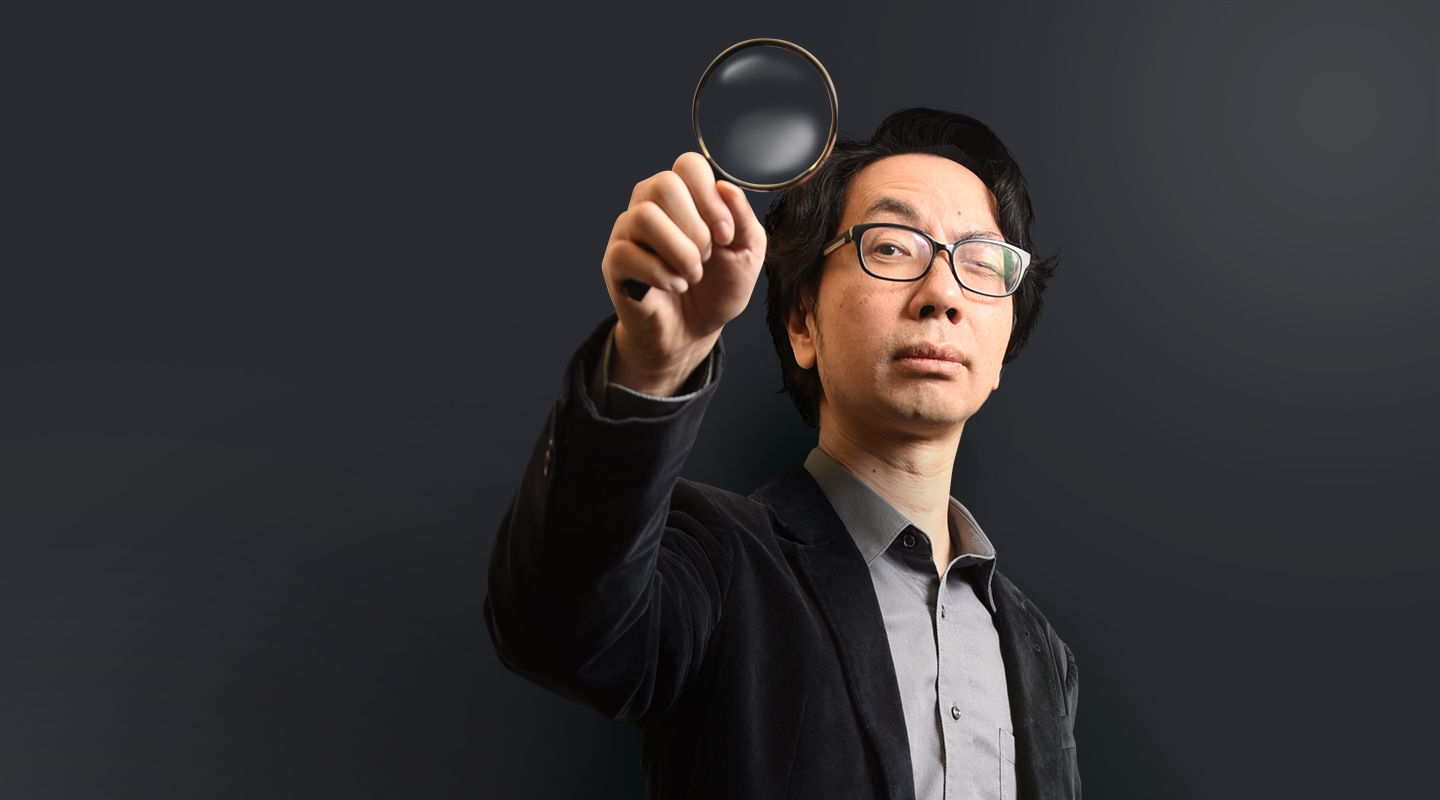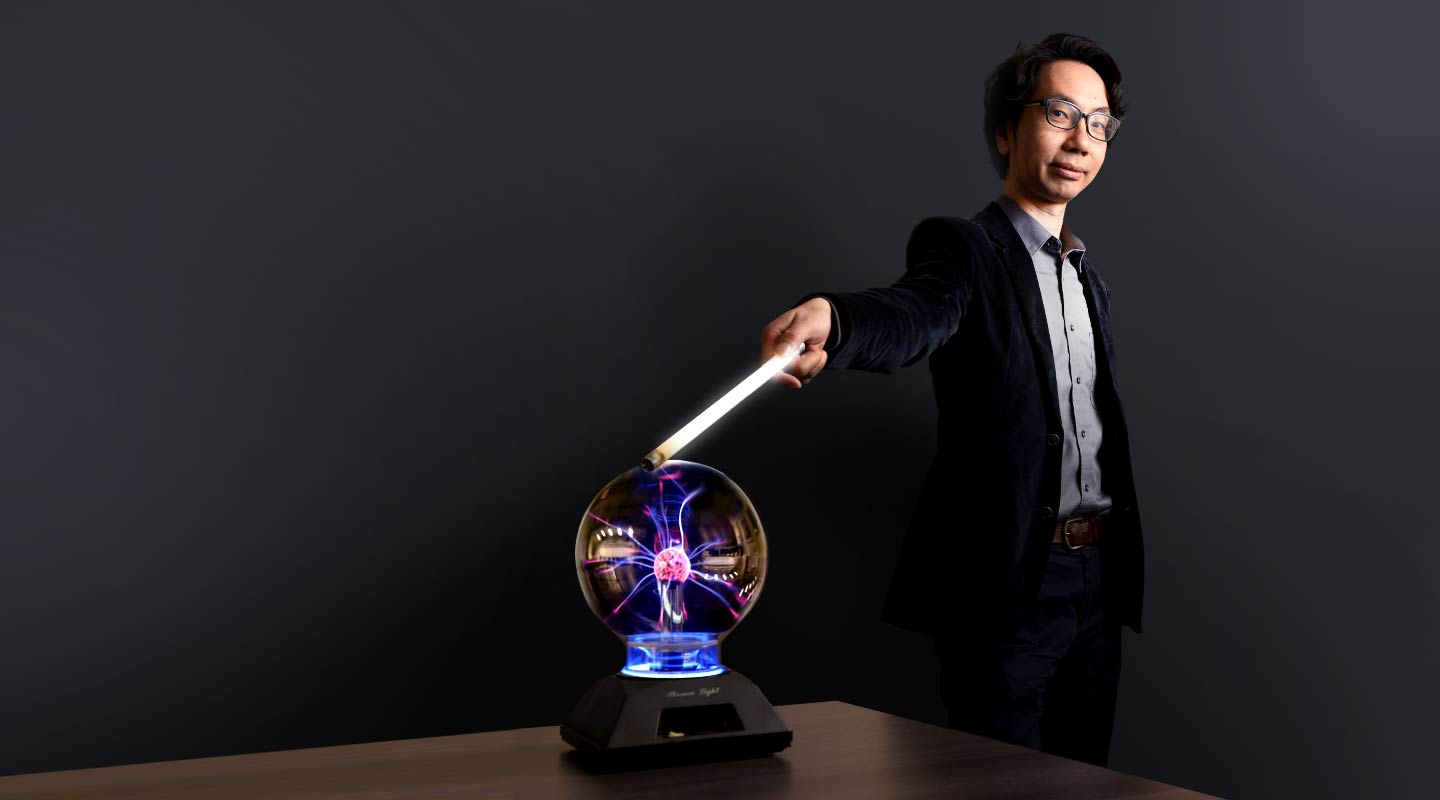Dear readers, With the launch of e-newsletter CUHK in Focus, CUHKUPDates has retired and this site will no longer be updated. To stay abreast of the University’s latest news, please go to https://focus.cuhk.edu.hk. Thank you.
Tong Shiu-sing—Pitching Physics to the Public

Dr. Tong Shiu-sing
-
Senior Lecturer, Department of Physics
-
Associate Director, Centre for Promoting Science Education
You shot to fame promoting the science of physics in the mass media. How has it changed your life?
My friends will joke about seeing me on TV, and I occasionally caught strangers staring at me in the street. I would be chatted up by people sitting next to me on public transport who said their children loved my show and asked for a photo. I’ve also received more invitations from primary and secondary schools to give lectures or sit on the panel of science competitions.
While on campus, there are students who opted for my course based on my light-hearted persona in Sidewalk Scientist. But I am a demanding teacher off camera. I am afraid they might feel duped when seeing my poker face in class.
You have been awarded the Physics Teaching Award, the Faculty Exemplary Teaching Award and the Exemplary Teaching Award in General Education. What do you think makes you an outstanding teacher?
I make a point of using simple, direct language to get my messages across. Especially when I teach astronomy in the general education class where most of my students are not physics majors, I must speak in a laymen-friendly way. I model it on my doctoral thesis advisor Prof. Kenneth Young who is able to communicate any difficult concept to any level of audience with ease and clarity.
Your physics-themed Facebook page ‘Dr. Tong’s Sharing’ has more than 24,000 followers. How did you make it?
Many educators are using social media to promote science, but I am especially unfettered by my teacher status. Some time ago, a Japanese fashion company designed a T-shirt that used an optical illusion grid to give the appearance of a bigger chest size. That brought to my mind the illustration of the time-space warp according to Einstein’s general relativity theory, so I took the chance to expound on it on Facebook, and reaped tons of likes and comments. I’ve filmed fun videos for my page and once risked being smacked in the face by a durian to demonstrate the law of conservation of energy. I also capitalized on my page’s popularity to boost the ‘e-learning Micromodules for Introductory Physics’ for my Department. The website turned out to log almost 20,000 visits in a single week. I guess I have a natural flair for saying the right thing at the right time to capture attention.

What is your secret of explaining physics to the general public?
The process of explaining science often involves impenetrable jargons. For instance, why is it that the faster a spinning top spins the steadier it turns? One tends to throw the term ‘conservation of angular momentum’, and no more than that. Such answer may deter the inquirer who came with one question but are given more questions to bring home. When I have to say the term, I would add instantly that it means the inertia of a spinning object will keep it rolling in the absence of external forces. This approach may be blamed for dumbing down science, but is conducive to expanding the audience.
You are an associate director at the Centre for Promoting Science Education. What has it done to drive STEM education in Hong Kong?
The Centre comprises scholars across disciplines of the Faculty of Science. Our main targets are secondary students and teachers, and we give them lectures on popular science from time to time. Our ‘Science Academy for Young Talent’ regularly rolls out courses for interested secondary students. Last summer, we co-organized the first ‘CUHK STEM Course’ to let more than a hundred Form-6 students have a taste of freshman-level mathematics, physics and engineering. It was hoped to help them find their preferred majors before applying for university, and to discover future scientists for the city.
When you hear the claim that physics is a worthless degree in Hong Kong, how would you respond?
Many important technologies that have changed the way we live stem from fundamental physics. Take the discovery of magnetic field for example. Physicists found that when nuclei are placed in it they will line up. The phenomenon was later used to produce detailed images of the human body which comprises mostly water molecules. That’s how MRI scan was born. What we consider necessities today like smartphones, computers, fibre-optic Internet and GPS would not be possible without advances in physics. I would say physics is a cornerstone of modern civilization. Moreover, when applied technology hits a plateau, it is only by further understanding basic physics that humankind would take a quantum leap again.
This article was originally published in No. 513, Newsletter in Mar 2018.